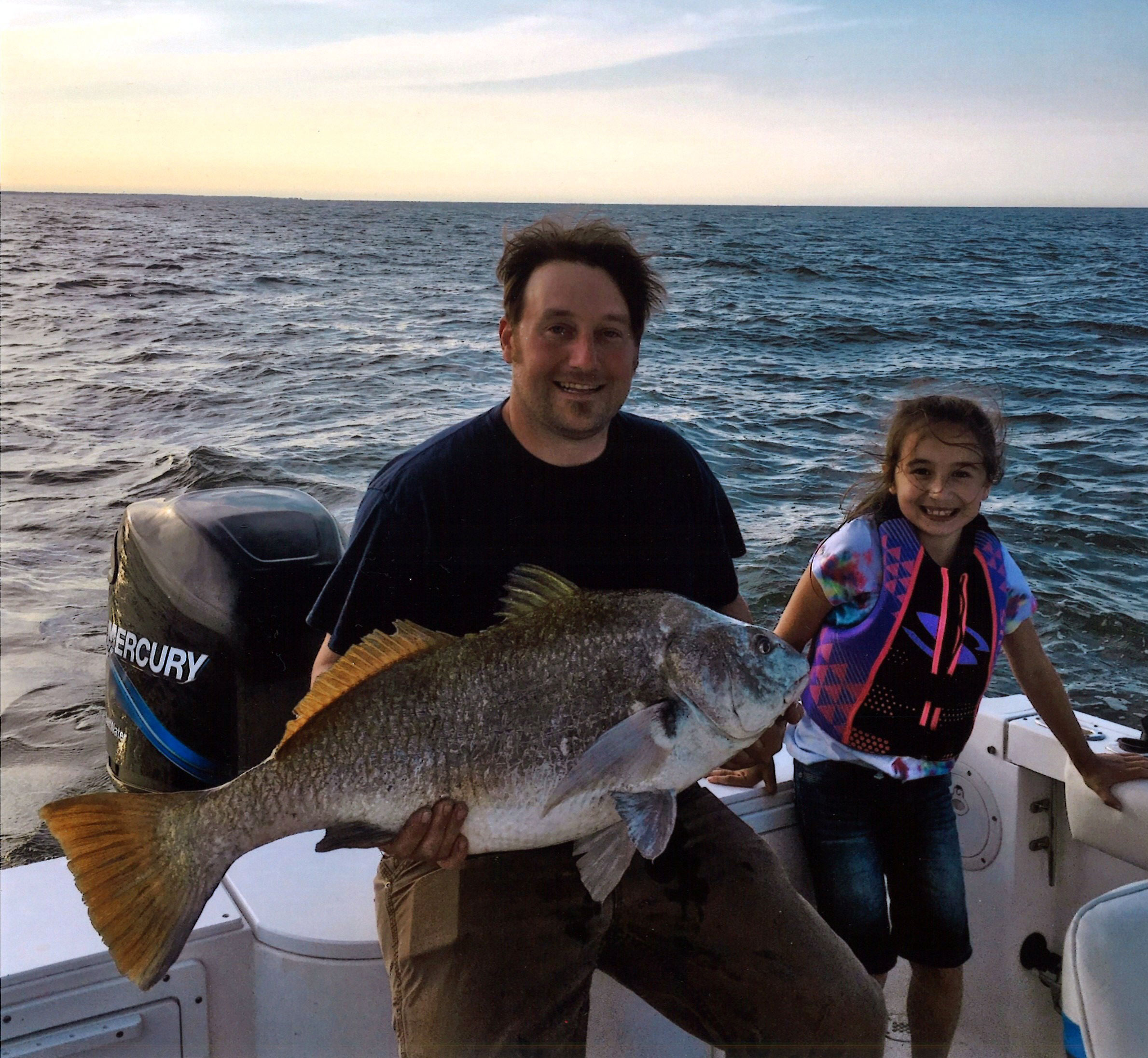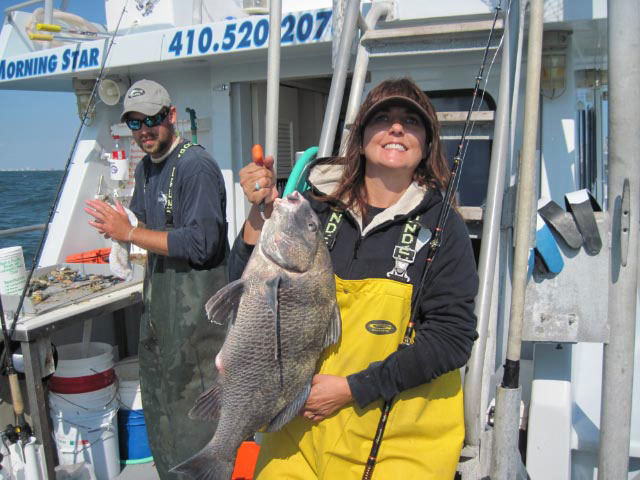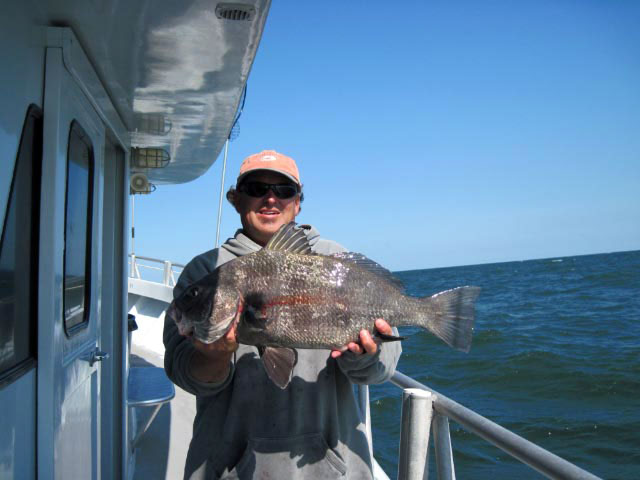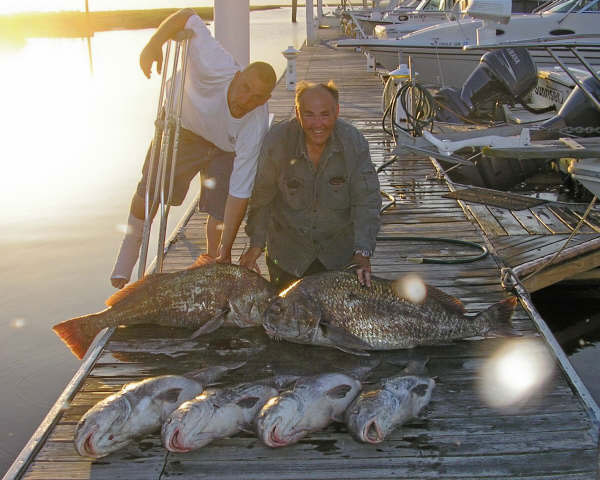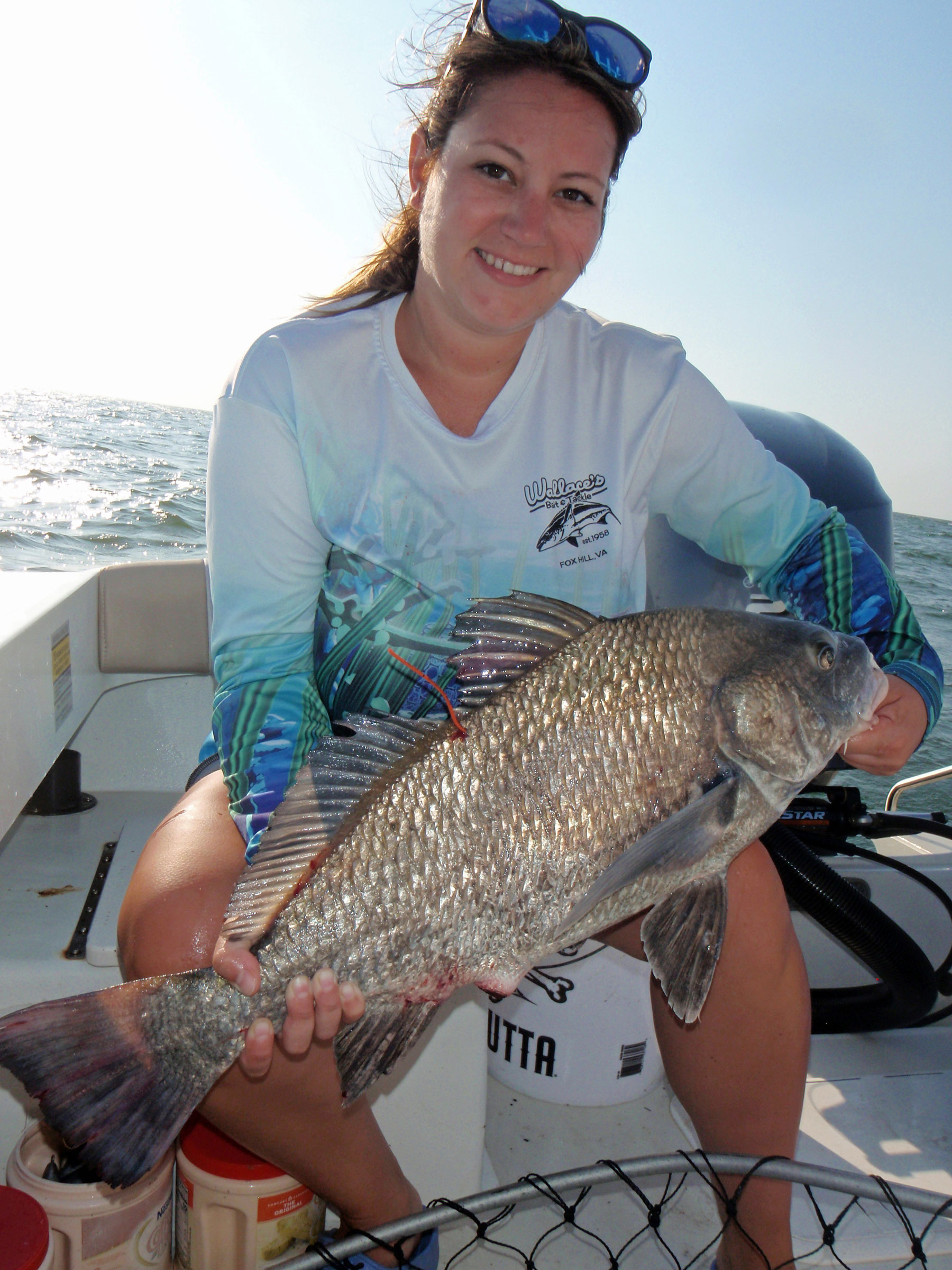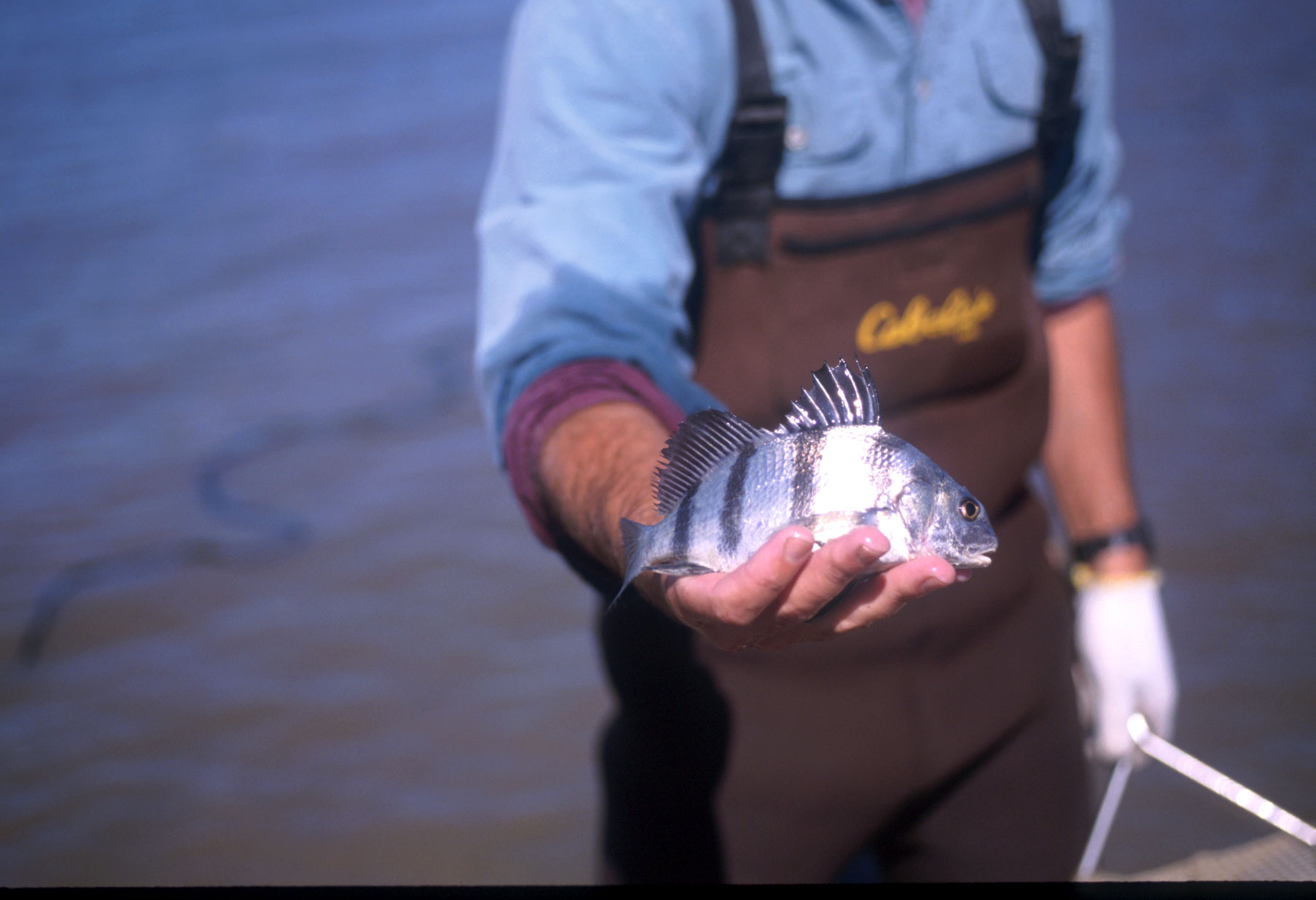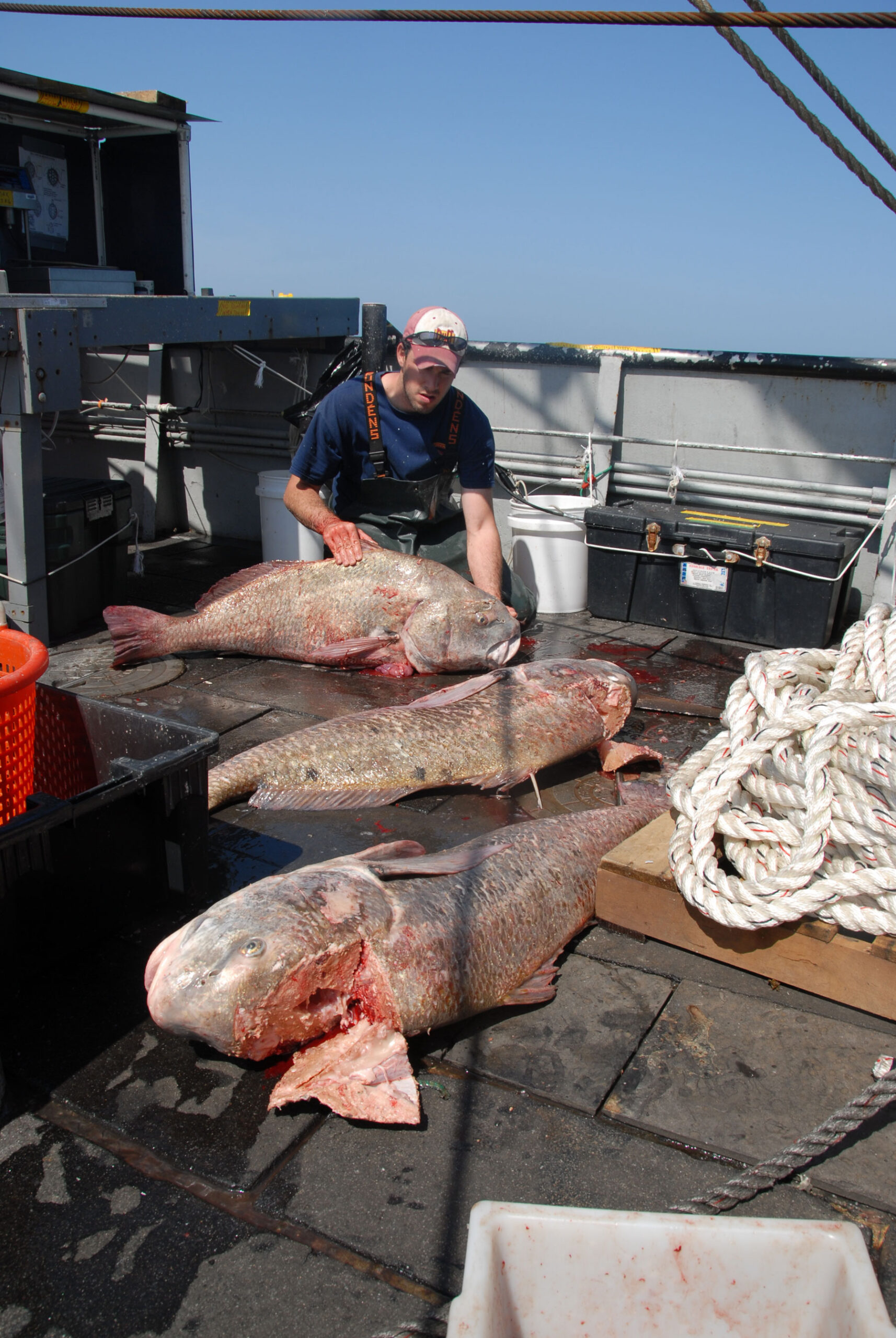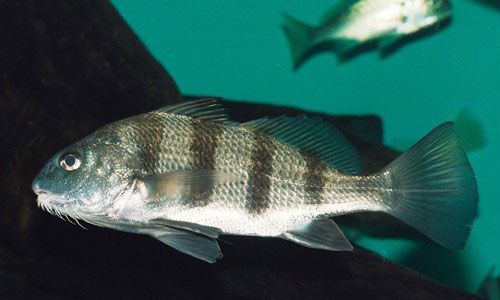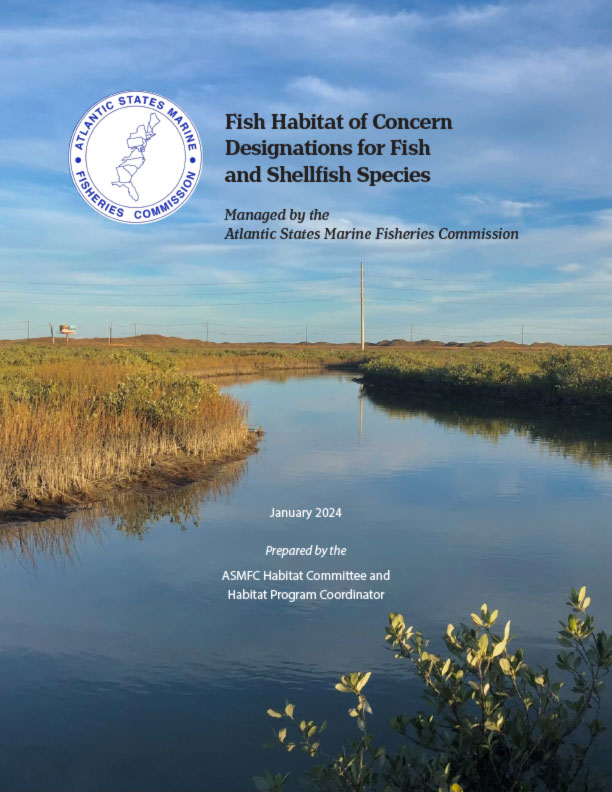Black Drum
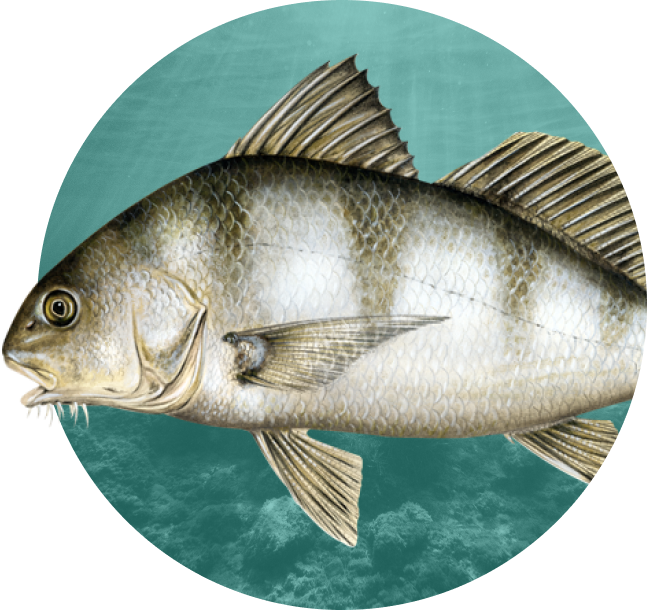
Latest News and Resources
-
Black Drum Species Management Overview — November 2024
-
Sciaenids Management Board Annual Meeting Supplemental Materials — Oct. 2024
-
Black Drum FMP Review – 2023
-
Black Drum Technical Committee Data Update — October 2024
-
Proceedings of the Sciaenids Management Board Second Meeting — October 2024
-
2024 Annual Meeting Final Agenda
-
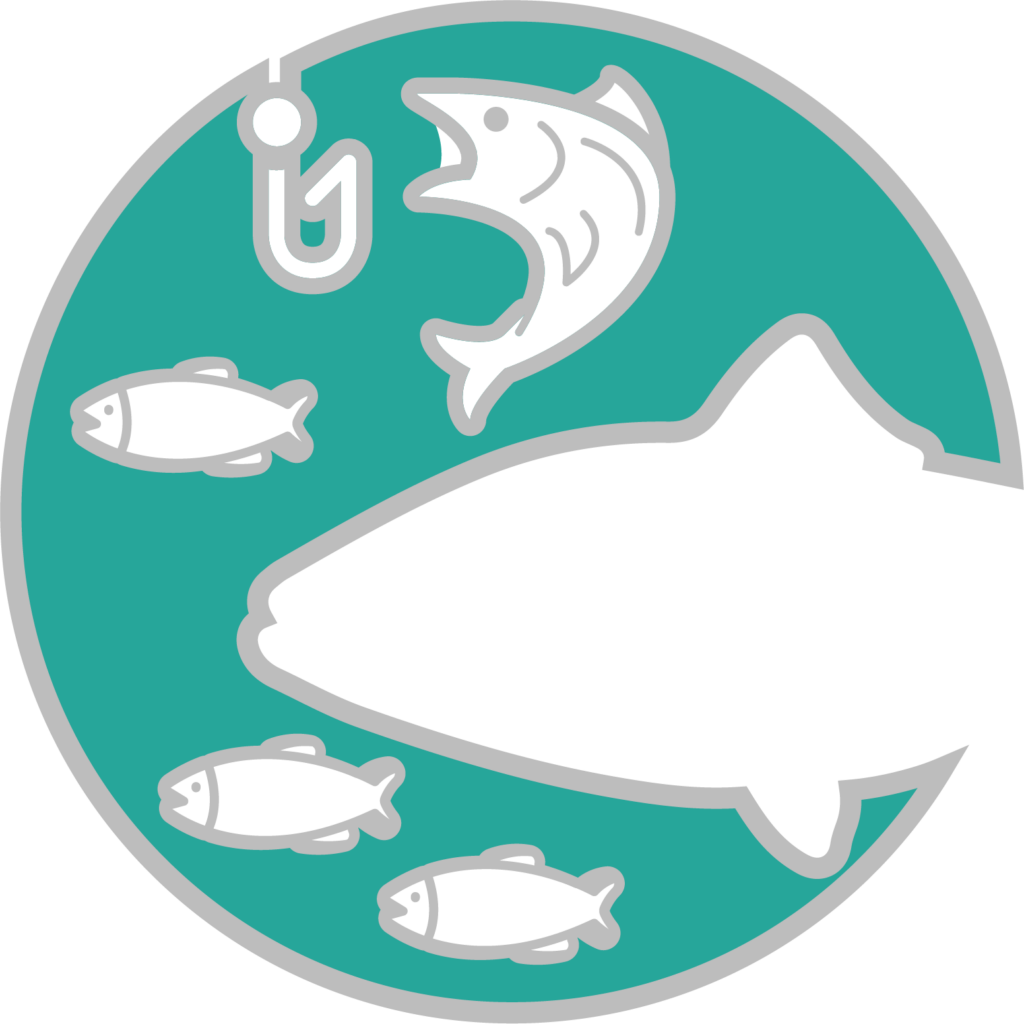
Population Abundance
Not overfished

Fishing Mortality
Overfishing not occurring
Management
Stock status based on 2023 benchmark assessment. Spawning biomass has been increasing. Exploitation has remained at a higher, stable level since the early 2000s.
Meeting Calendar
Next Meeting
No events found
-
Recent Management Actions
Action
Status
No actions found
Contacts
- Tracey Bauer, FMP Coordinator (TBauer@asmfc.org)
- Management Board, Doug Haymans, Chair
- Technical Committee, Harry Rickabauch, Chair
- Advisory Panel, Craig Freeman, Chair
Species Information
Black drum are essential estuarine fish found along the Atlantic coast from the Gulf of Maine to Florida, known for their impressive size and significant role in both recreational and commercial fisheries. Managed under the Interstate Fishery Management Plan, black drum support vibrant fishing communities and contribute to the marine ecosystem as bottom feeders and key prey for numerous predators. Recent stock assessments confirm that black drum populations are healthy and not experiencing overfishing, ensuring their sustainability through adaptive management practices and ongoing monitoring.
Management
In 2013, the Commission adopted the Interstate Fishery Management Plan (FMP) for Black Drum, which requires all states to implement a maximum possession limit and a minimum size limit of no less than 14 inches in addition to maintaining their previous regulations. Further, the FMP establishes a management framework to address future concerns or changes in the fishery or population.
The FMP also includes a management framework to adaptively respond to future concerns or changes in the fishery or population. Concern about the increase in harvest by both recreational and commercial fishermen in recent years was alleviated by the findings of the 2015 stock assessment. Given the assessment findings, the Board chose to not make any additional changes to the management program at that time.
In March 2017, a report on Sciaenid Fish Habitat was released including information on habitat for several species, including black drum, during all stages of their lives, their associated Essential Fish Habitats and Habitat Areas of Particular Concern, threats and uncertainties to their habitats, and recommendations for habitat management and research. This report is meant to be a resource when amending FMPs in the future for these species.
The Board approved Addendum I to the Black Drum FMP in May 2018. The Addendum allows Maryland to reopen its black drum commercial fishery in the Chesapeake Bay with a daily vessel limit of up to 10 fish and a 28-inch minimum size.
Stock Status
The most recent coastwide benchmark stock assessment for black drum, which incorporated data through 2020, was accepted in 2023 by the Sciaenids Management Board for management use. Based on assessment results, the black drum stock is not overfished and not experiencing overfishing. Management action was not taken because there are no major concerns with the stock.
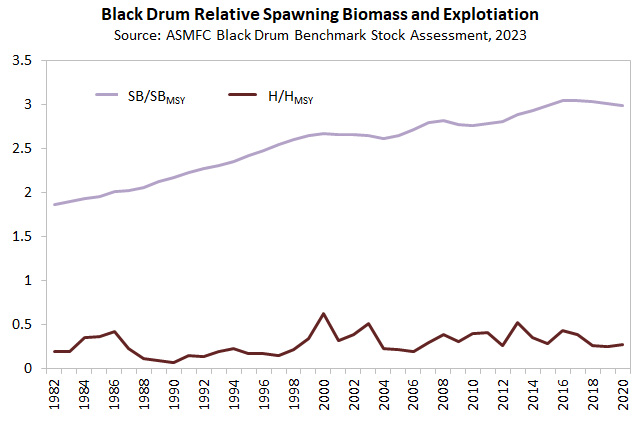
The assessment model uses recreational CPUE as an index of abundance, total fishery removals (commercial landings, recreational harvest, and recreational dead discards), life history information, and selectivity information to estimate black drum spawning biomass and exploitation (i.e., the proportion of stock biomass removed by fishing), as well as their associated thresholds. The assessment model estimated increasing spawning biomass, which has remained above the spawning biomass threshold throughout the time series. Exploitation has remained below the exploitation threshold throughout the time series. Exploitation was estimated to be relatively high in the mid-1980s, followed by lower levels throughout the 1990s. Exploitation increased around 2000 and remained at a higher, stable level throughout the remainder of the time series. Overall, black drum remains a data poor stock and the assessment acknowledges a relatively high level of uncertainty in available data sets and population estimates, although there is greater certainty in qualitative stock status determinations.
Due to data limitations and assessment uncertainty, a suite of indicators from black drum data sets developed as part of this assessment will be used to annually monitor the stock for any concerning trends and identify the need for an expedited stock assessment. Indicators include eight indices of abundance, one index of range expansion, and six indices of fishery characteristics (i.e., regional catch time series). The assessment reviewed the indicators through 2020. The indicators showed increased fishery removals in the last twenty years and less frequent large recruitment events in the Mid-Atlantic in the last ten years. There were no clear indications of a declining trend in abundance from abundance indicators, but there was a declining trend in the final two years of the recreational releases time series that may be reflective of abundance in addition to other factors. There is some indication of northern range expansion. In 2024, the indicators were updated with an additional year of data, 2023. Overall, the TC did not believe the updated indicator values deviated far enough outside of the historical range to cause concern, though increases in recreational and commercial landings were noted in the South Atlantic.
Commercial & Recreational Fisheries
With sizes reaching over 46 inches in length and 120 pounds in weight, black drum are drawing increasing interest from recreational anglers, particularly as a catch and release fishery. Outside of a large peak in 2008, recreational and commercial landings have remained fairly stable since 2000, with recreational landings far exceeding (typically 20-30 times) those of commercial (by weight).
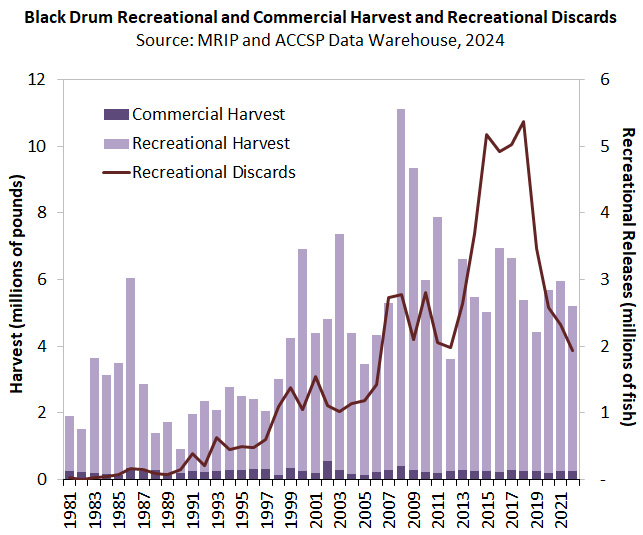
On average, in the past 10 years (2014-2023), recreational landings made up approximately 96% of the total coastwide harvest. Recreational landings in 2023 were 5.2 million pounds, or 1.2 million fish, with landed fish constituting roughly 31% of all black drum caught by the fishery. The other 69% of recreationally caught fish were released alive, largely due to the establishment of the Fishery Management Plan in 2013. In 2023, 2.7 million fish were released alive. Florida, followed by North Carolina, landed and released the majority of recreational harvest in 2023.
The commercial fishery landed 347,506 pounds in 2023. North Carolina and Virginia fisheries comprised the majority of total commercial harvest.
Life History
Black drum (Pogonias cromis) can be found in nearshore waters along the Atlantic coast from the Gulf of Maine to Florida and as far south as Argentina. Atlantic coast black drum migrate inshore to the north in the spring, and to the south in the fall. Fish can reach over 46″, 120 pounds and 60 years of age. They grow rapidly until the age of 15, at which time growth slows.
Spawning occurs during the winter and early spring, occurring earlier in the southern areas (November – April) and later in the northern areas (April – June). An average-sized female (13.4 pounds) may spawn 32 million eggs each year. Recruitment appears to be sporadic, with infrequent large events.
Black drum are primarily bottom feeders. Young black drum feed on small fish and invertebrates, such as copepods, annelids, and amphipods. The eggs and larvae of this species were shown to be subject to high predation. As juveniles, they are prey to a wide range of estuarine fish species, such as spotted seatrout and crevalle jack.
News & Resources
Explore recent news, management updates, and scientific reports to gain a deeper understanding of ongoing conservation efforts and sustainability strategies.
-
Prepared for the Commissioner Manual
-
-
-
The 2023 Black Drum Benchmark Stock Assessment determined the Atlantic coast stock was not overfished nor experiencing overfishing in the terminal year of the assessment (2020). However, the assessment acknowledged lack of contrast in black drum data sets coupled with high uncertainty in model-based estimates. To this end, the Black Drum Technical Committee (TC) recommended…
-
Consider 2024 Red Drum Benchmark Stock Assessment And Peer Review Report. Risk And Uncertainty Tool Inputs For Red Drum. Consider Annual Update To Black Drum Indicators. Consider Black Drum And Spotted Seatrout Fmp Plan Reviews And State Compliance Reports For The 2023 Fishing Year
-
82nd Annual Meeting, October 21 – 24, 2024
-
-
Consider 2024 Red Drum Benchmark Stock Assessment and Peer Review Report
-
-
-
The Sciaenids Management Board of the Atlantic States Marine Fisheries Commission convened in the Jefferson Ballroom of the Westin Crystal City Hotel, Arlington, Virginia, a hybrid meeting, in-person, and webinar; Wednesday, August 7, 2024, and was called to order at 11:15 a.m. by Vice Chair Shanna Madsen.
-
The Sciaenids Management Board of the Atlantic States Marine Fisheries Commission convened in the Jefferson Ballroom of the Westin Crystal City Hotel, Arlington, Virginia, a hybrid meeting, in-person and webinar; Tuesday, April 30, 2024, and was called to order at 11:45 a.m. by Chair Doug Haymans.
-
Updated 2024
-
The Habitat Committee drafted text descriptions of FHOC for each Commission-managed species drawing on information from the current description of FHOC in the FMPs, species fact sheets, other ASMFC publications, and current literature.
-
Get Hooked on ASMFC News
Dive into the latest updates and catch all the important news by joining our newsletter mailing list. Stay in the loop with meeting agendas, fisheries management news, and more.
